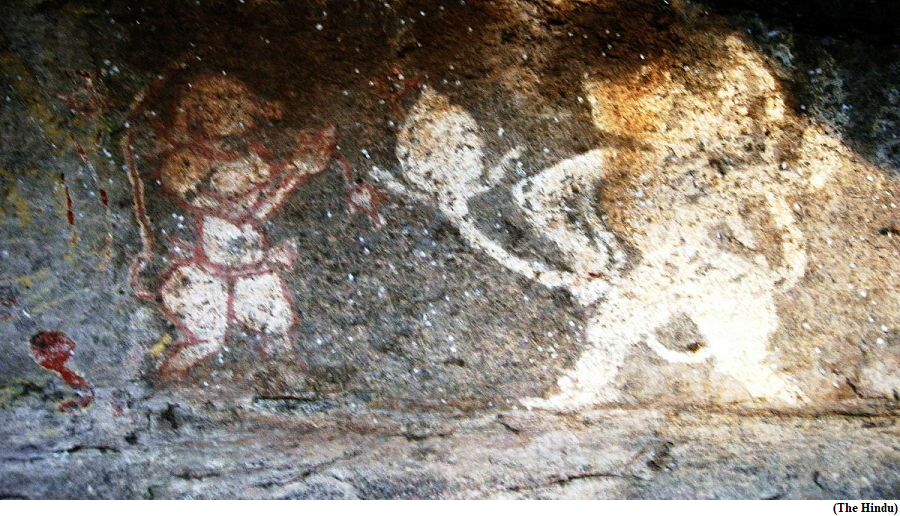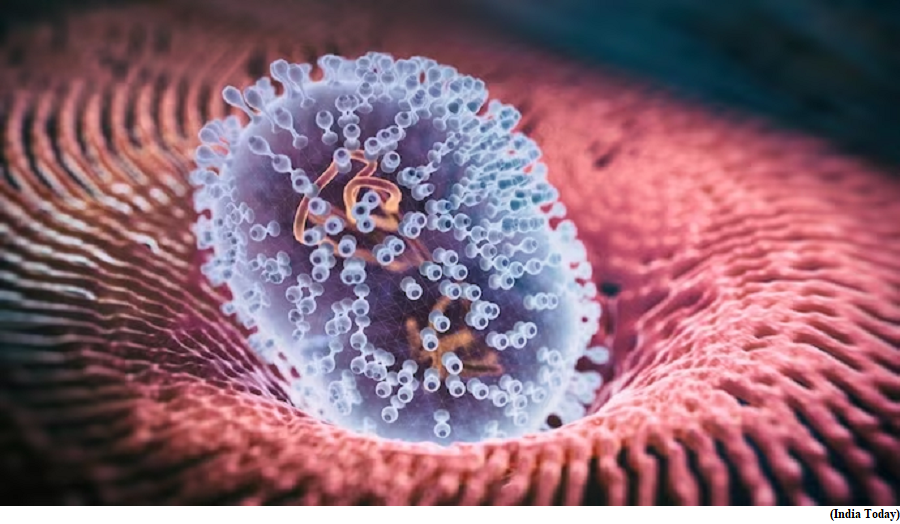A fascinating fusion of rock art in A.P.’s Rudragiri (GS Paper 1, Culture)

Why in news?
- Rudragiri hillock, located in the village of Orvakallu, Atchampet mandal, in Guntur district of Andhra Pradesh, boasts a celebrated historical past and remarkable archaeological monuments.
- This site unveils a fascinating combination of prehistoric rock paintings from the Mesolithic period and exquisite artwork from the Kakatiya dynasty.
Key features:
- The paintings, adorned with a variety of colours derived from white kaolin and different pigments, depict captivating scenes from the epic Ramayana. Despite the impact of nature’s wrath, fragments of these paintings offer valuable insights into their creation during the 13th century A.D.
- The first cave, starting from the southern end of the hillock, presents a narrative mural portraying the intense battle between the Vanara brothers — Vali and Sugriva.
- In the middle cave, a grand sketch of Hanuman, accompanied by sacred symbols of the conch (Sankha) and the fire altar (Yagna Vedi), captures visitors’ attention. Hanuman is depicted carrying the Sanjivani hill in his hand, symbolising his mission to save Lakshmana’s life.
- The third cave houses the prehistoric rock paintings from the Mesolithic era. Interestingly, the Kakatiya artist chose the same rock shelter to superimpose the elegant figure of Hanuman, who is portrayed in a unique ‘Anjali’ posture, folding his hands in a divine offering.
- Remarkably, the Ramayana figures neither overshadow the Mesolithic drawings nor diminish their scenic beauty.
Rock shelters in Rudragiri:
- Rudragiri, nestled amidst the Eastern Ghats, features five naturally formed rock shelters at its foothills, facing westward. These shelters served as living quarters for people during the Mesolithic age around 5000 B.C., and they bear witness to the luminous rock paintings of that era.
- Two natural caves at the southern end of the hillock also exhibit exceptional murals from the renowned Kakatiya kingdom.
Scientists design origami DNA to stop virus from assembling
(GS Paper 3, Science and Technology)
Why in news?
- Recently, the researchers have made significant progress in controlling the assembly of viruses.

Details:
- They manipulated the DNA to fold into various shapes, like origami, forcing them to assemble accordingly.
- This innovative approach allowed them to gain control over the shape, size, and topology of the virus proteins.
DNA origami:
- The researchers from Griffith University used DNA ‘origami’ templates to direct the formation of virus capsids, the protective protein shell of viruses, under physiological conditions.
- These user-defined DNA origami nanostructures served as platforms for binding and assembly, becoming embedded within the capsid.
- They equated the process to wrapping a present, with the virus proteins depositing on top of the DNA origami shape. Different virus proteins are like different wrapping paper, each relevant to different uses of the coated DNA origami.
Significance:
- This precise control over the size and shape of virus proteins could potentially revolutionize the development of new vaccines and delivery systems.
What’s next?
- They are now focused on understanding how different viruses self-assemble and how they can be used to encapsulate different cargoes.
- Their findings have already led to the discovery that a virus found in mice can carry protein cargoes through inhospitable environments and into specific subcellular compartments in human cells..
- The next stage of their research will explore why viruses don't naturally assemble into different shapes.



